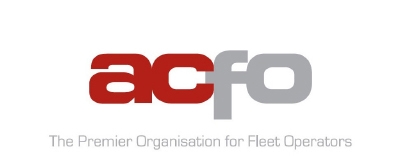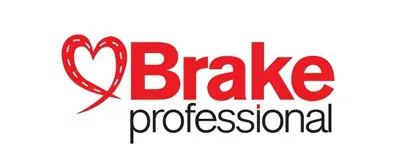The Driver
Are you satisfied that your drivers are competent and capable of doing their work in a way that is safe for them? Are you satisfied that your employees are properly trained? This section will help you evaluate whether you are managing your employees who drive for work, effectively.
Successfully reducing accidents still further requires a sustained change in driver behaviour. Your drivers probably know how to drive safely but some may choose not to or occasionally become distracted suffering lapses of concentration. Maybe they aren’t fully aware of the possible consequences of their behaviour on the road, or maybe they occasionally feel that the pressure of being a productive employee outweighs the need to remain vigilant and safe while driving.
Often, risk taking isn’t intentional – it can happen because your driver believes that he or she is behaving safely but has a lack of understanding about vehicle capabilities, reaction times, speed and braking, alcohol awareness, etc. Ensuring your drivers are legally to drive for work, correctly licenced, insured and medically fit will minimise the risk to the company, while improving awareness and knowledge of key issues will allow your drivers to make better informed choices.
- Before you require any employees to undertake driving tasks as part of their job, make sure that they are suited to the driving tasks you want them to complete.
- A driver must be fit to drive.
- Checks of driving entitlement/licences must be carried out regularly (6 monthly).
- Fully train your drivers in all relevant aspects of their jobs. Consider refresher training to ensure that drivers will maintain a high level of performance over a prolonged period of time.
- Adequate training must be provided if the driver is required to drive a new type of vehicle.
- Supplement your policy document with written instructions, training sessions or group meetings to ensure your drivers are aware of the company policy on driving for work and what is expected from them.
-
- Ensure that your drivers are mentally and physically fit to drive using a process of self-declaration. Set minimum “fitness to drive” standards and have procedures in place to ensure that these are met.
- Minimum standards for fitness to drive can be drawn up using the DVLA practitioners’ guide to the current medical standards of fitness to drive (downloadable free of charge on the DVLA’s website).
- Advise drivers that they must notify management if they have disabilities or conditions that could prevent them from driving safely.
- Although regular health checks are only a legal requirement for LGV (Large Goods Vehicles) or PCV (Passenger Carrying Vehicles) drivers, all employees should have pre-employment medicals to check eyesight and relevant aspects of physical and mental health.
- Appropriate health surveillance should continue beyond recruitment (minimum follow-up every five years unless age or condition dictates otherwise).
Eyesight
- Staff who drive should take an eyesight test every two years or when they suspect they have a problem (whichever is sooner).
- Eye tests should be carried out by qualified optometrists, and should include a test of the driver’s horizontal and vertical range of vision.
- All staff who will drive should have an eyesight test prior to recruitment.
- Medical conditions that can affect vision include glaucoma, diabetes, a stroke, heart disease and diplopia.
- If you recruit staff to undertake work which involves driving, you need a clear strategy to integrate necessary safe driving criteria into the overall “person specification” for the job.
- Check the applicant’s references are sound.
- Check the potential driver’s licence is valid to drive the company or privately owned vehicle. Ensure that the applicant holds the appropriate class of licence for the vehicles (plus trailers) you want him to drive (visit the DVLA website for detailed information). You can obtain information from the DVLA on driver entitlement and endorsements of employees and potential employees. However, this information can only be released with the driver’s consent.
- Explore the past accident or prosecution history and attitudes towards road safety in the interview.
- Assess driving competence and attitudes at recruitment stage. There are web-based driver risk assessments available that you can use for this purpose, e.g. RoSPA’s Driver Profile (detailed information on the RoSPA website).
- Carry out an on-road assessment to ensure that the potential employee is competent to carry out the driving tasks required in his job.
- Test the candidate’s knowledge of the Highway Code.
- Produce a drivers’ handbook. It can help explain to drivers the importance of driving safely and how to drive safely. Drivers should be given a copy each and required to read and learn the information in it and keep it with them in their vehicle. The drivers’ hand book should include:
- The risk of death and injury on the road.
- Your road risk policy.
- Company rules on driving (e.g. a ban on using mobile phones while driving).
- Company rules on associated activities (e.g. how to safely secure heavy luggage in a boot, how to strap down loads on a flat bed trailer and how to check on vehicle safety).
- General advice leaflets on driving safely (e.g. on topics such as driver tiredness).
- Advice on what to do in the event of an incident and blank “bump” cards.
- Contact details for the road risk manager and any additional emergency contacts.
Make sure that appropriate language is used, that will be understood by your workforce, and try to test their comprehension of the handbook.
- Ensure that drivers are aware of seat belt wearing requirements and that they know how to adjust head restraints and seats appropriately.
- Encourage drivers to adjust the vehicle features (e.g. seat, mirrors, head restraints) to suit and to familiarise themselves with the vehicle before setting off.
- Ensure that drivers check the condition of their vehicle and of any attachments before setting off. Get employees to fill in and sign a vehicle check list.
- Give out clear guidance and operating procedures to deal with emergencies such as breakdowns or accidents. These will reduce the risk of an assault or of harassment under such circumstances
- Encourage drivers to park in well lit areas at night and where there are people about. Valuables should be stored out of sight and vehicles should be locked every time the driver leaves the vehicle.
-
- Carry out driving-related staff induction training. This could include a classroom training session on the contents of the driver handbook and a familiarisation session with the drivers’ future vehicle, covering vehicle controls, safety features and vehicle handling.
- Training should not be the only control measure used. Competent drivers cannot drive safely in, for example, a poorly maintained vehicle.
- The provision of driver training should be guided by the results of driver assessments. Driver assessments should be carried out at regular intervals (annually). To assess the training needs of an employee you should use a qualified and competent assessor or use a web-based solution such as RoSPA’s Driver Profile (details available on the RoSPA website) or similar schemes.
- All drivers should undergo self-awareness training thus enabling drivers to identify personal factors which may degrade their ability to drive safely e.g. poor health, use of alcohol or (prescribed) drugs, domestic and occupational stress, fatigue, poor preparation for work etc.
- Do not let your drivers drive vehicles they have not had appropriate training for.
If driving does not improve through training, drivers should be taken off their driving duties. Additionally…
- Use a training provider accredited by a nationally recognised body.
- Have input into the content of the training so that it meets your needs.
- Provide the trainer with any relevant information about drivers prior to training including their incident rate and number of endorsements.
- Regularly check the standard of the training.
- Ensure that your employees driving for work have had appropriate first aid training. Organisations such as the Red Cross can provide training courses on your company premises (refer to the Red Cross’s website for more information).
- Ensure that each vehicle used for work-purposes is equipped with a first aid box.
- Supply a stocklist for the first aid box.
- Put a system in place to ensure that the contents of the first aid box match the stocklist.
- Care has to be taken that safer driver reward schemes do not lead to under-reporting of incidents or accidents, e.g. if drivers are awarded for incident-free driving.
- Only introduce an award scheme for accident-free driving if you can be sure that all accidents are reported in your company.
- As an alternative, present an award to drivers who achieve the highest standards in their annual driver assessment or consider rewarding employees coming up with ideas about how to improve the company safety procedures or how to make work-related road driving safer.
- Introduce a policy that addresses illness as an area of risk management.
- Some employees will attempt to “struggle on” when partially incapacitated by illness. Driving whilst ill and /or under the influence of prescribed or self-administered medicinal drugs can be a dangerous driver impairment which must be recognised by managers in order to avoid possible injury / fatality incidents. It may be necessary to send an employee home.
- Illness combined with stress, fatigue or drug use can compound the problem.
- A total of 12.8 million working days were lost to stress, depression and anxiety in 2003/04.
- 78% of drivers say they often feel stressed, angry or excited when behind the wheel, but 97% agree it is important to stay calm3.
- Potential sources of stress are:
- Demands of the job and organisational culture.
- Lack of control or involvement.
- Work-life balance.
- Domestic issues.
- Tiredness or hours spent driving.
- External factors, such as congestion or driving of others.
- To identify and tackle driver stress:
- Make achievable demands on employees; allow for unexpected hold-ups in scheduling and journey planning.
- Put systems in place to respond to any concerns expressed by employees, e.g. have regular confidential meetings between staff and their line managers to identify any work or home problems that might affect their driving.
- Put systems in place to encourage managers to support their staff.
- Inform employees about available support, e.g. counselling and how to access it.
- Encourage positive behaviour to avoid conflict and ensure fairness.
- Consult employees on any change and communicate change clearly.
- Distraction that affects driving might result from:
- Mobile phone use.
- In-vehicle technology.
- Reading maps/directions whilst driving.
- Eating and drinking whilst driving.
- Chatting with passengers.
- Other drivers and road rage.
- Thoughts of work or personal life.
- 83% of drivers think about something other than their driving when behind the wheel, such as home life or work. (Survey carried out by the road safety organisation BRAKE)
- 45% of drivers have lost concentration while performing tasks such as adjusting the stereo, heating or satellite navigation system; 20% admit being so distracted by in-car gadgets that they have veered out of their lane. (Survey carried out by Privilege Insurance)
- Factors that can increase the risk of a driver being involved in a tiredness-related crash should be taken into account when developing policies to prevent driver tiredness. These factors include:
- Time of day: the most likely times to fall asleep are midnight to 6am and 2pm to 4pm.
- Shifts: drivers who work long shifts are more likely to suffer fatigue.
- Rest breaks: drivers should take a break of 15 minutes every 2 hours or sooner if feeling tired.
- Stress: tiredness is a typical symptom of stress resulting from work or home life pressures.
- Lack of sleep – drivers may suffer lack of sleep due to:
- Disturbed sleep: new baby, stress, domestic problems, sleep disorders.
- Irregular sleep patterns: this is a particular problem for drivers who switch regularly from day to night shifts without sufficient time for their body clock to adjust.
- Insufficient rest periods: long jobs, long commutes or drivers moonlighting in another job or hobby.
- Sleep disorders such as Sleep Apnoea.
- Medication: Some prescription drugs and over-the-counter drugs can cause drowsiness and impaired alertness. Check for side-effects on the package.
- Vehicle engineering: modern vehicles are quiet and comfortable, inviting drivers to relax when driving. Driving can have a lulling effect particularly in vehicles fitted with comfort enhancing features such as cruise control.
To tackle driver fatigue:
- Ensure drivers do not work shifts that are too long.
- Set in-house limits on maximum driving distances per day, per week, per month, per year.
- Plan realistic schedules with suitable routes and allowing sufficient time between drop offs/ meetings or appointments.
- Consider fitting warning systems in vehicles to remind drivers to take a break after a fixed time.
- Do not put pressure on a driver to continue driving when they have notified employers they are too tired.
- Arrange overnight stays or encourage use of alternative modes of transport if an employee has to drive two hours or more each way on top of a four hour or more work period.
- Check that drivers are not affected by any circumstances or conditions which increase the risk of falling asleep at the wheel.
Educate your employees who drive for work about the dangers of fatigue and advise them to:
- Consider the possibility of fatigue when selecting a mode of transport.
- Consider overnight stays.
- Get enough sleep before a long drive.
- Include plenty of time for sufficient rest breaks in their schedules.
- Stop driving if they feel sleepy during a journey.
- Drink a caffeine drink and take a 15 minute nap in their vehicle as this can help to reduce fatigue. Advise them to only drive on when feeling alert and explain that music or fresh air will only reduce fatigue for a short time.
- That complying with Regulations on daily and weekly driving is a legal requirement.
- All vehicle-using organisations should have clear policies to avoid impairment of driver fitness due to substances taken for recreational or therapeutic reasons.
- Educate your drivers about the dangers of drink and drugs in the drivers handbook.
- Explain in employees’ contracts that it is a disciplinary offence to be over the legal alcohol limit or to be impaired through drug use while at work, either on the road or off it. Include prescription drugs and over-the-counter medicines (e.g. some hay fever medication) that affect driving as well as illegal drugs.
- Ban lunchtime drinking for all staff who may be required to undertake any safety critical function, including driving.
- Take particular care to explain to drivers the amount of time it takes alcohol to leave the blood stream as well as the dangers of driving the morning after.
- Apply a zero-tolerance policy for alcohol in your company; alcohol can even impair a driver, who is under the legal limit; the easiest way to test for alcohol is using a breath test.
- Advise employees who drive to notify their immediate line manager if they are taking any prescribed drugs or over-the-counter medicine that affects driving, e.g. by causing drowsiness.
- Physical drug testing can be carried out using urine, saliva, sweat or blood. Before testing, a consent form must be signed by the person being tested. However, it is also possible to be trained to recognise symptoms of drug use and drug impairment as a form of screening.
- Some companies are now testing their drivers pre-employment, randomly throughout their employment or after crashes.
- Speed is the single biggest cause of deaths on roads. Drivers who speed crash more often than those who do not.
- Ensure all staff (including all managers) understand that the organisation expects everyone who drives for work to drive safely.
- Ensure employees’ schedules can be achieved without speeding; avoid strict arrival times if possible. Ask drivers to stop somewhere safe and ring ahead rather than speed to meet an appointment time.
- Ensure that speed limiters are set to the required maximum (56mph for trucks and 62.5mph for buses and coaches) for commercial vehicles and consider fitting variable speed limiters that your staff can set to the appropriate maximum as they enter a particular speed limit.
- Educate your employees who drive for work about the dangers of speed and make them aware that your company does not tolerate speeding. Ensure they know:
- It is the company’s policy for all drivers to always comply with all speed limits.
- Exceeding posted speed limits, and gaining speeding points on your licence is a disciplinary offence.
- The risks of driving too fast on different types of road including, in particular, in towns and on rural roads.
- The importance of keeping a safe distance from other vehicles.
- The benefits of slowing down (less dangerous, less stressful and smoother journey without a significantly later arrival time).
- Mobile phones and driving don’t mixMobile phones have many benefits. They provide security and can be a great help in an emergency. But tests have shown a driver cannot help being distracted by a phone call or text message. If you are distracted, you will not register hazards or react quickly. A conversation on a hands-free phone is no less distracting than using a hand-held one.While driving, you will be breaking the law if you pick up or use any type of phone that is, or must be, held to operate it. For example, this means you may not use your mobile phone:
- when you are stopped at traffic lights;
- when you are queuing in traffic;
- to receive calls, pictures, text messages or to access the Internet.
Points on your licence
- It is illegal to use a hand-held mobile phone when driving and the penalties have recently gone up. From March 2017 you will receive a £200 fine and six penalty points on your licence. Points can mean higher insurance costs.
- You don’t have to be caught many times to be disqualified. If you get just six points in the first two years after passing your test, you will lose your licence under the New Drivers Act.
- You can also be prosecuted for using a hands-free mobile phone if you are not in proper control of your vehicle. The penalties will be the same as for using a hand-held phone. And the penalties for driving carelessly or dangerously when using any phone can include disqualification, a large fine and up to two years imprisonment.
- Employers can also be prosecuted if they cause or permit employees to take or make calls or send texts while driving.
Are there any exceptions?
- Yes – a driver may call 999 or 112 in response to a genuine emergency when it is unsafe or impractical to stop to make the call.
- Two-way radios are not covered by this offence but other devices for sending or receiving data are included if they are held while driving. (eg. MP3 players).
The best advice is to switch off before you drive off.
- When driving you should use voicemail, a message service or call diversion so you can pick up messages later.
- Only use your phone after you have stopped in a safe place. But never stop on the hard shoulder of a motorway except in an emergency.
- Avoid taking calls even on a hands-free phone while driving. They can be just as distracting. If you must answer, say you are driving and end the conversation. Otherwise you will put yourself and other road users at risk. We are all responsible for safety on the roads. If you make a call to someone and realise they are driving, stop the call and arrange to speak to them later. You cannot see the hazards or judge the road conditions while you’re talking to a driver. And you wouldn’t want to distract the driver if you were in the car.
If you are driving a vehicle, there is no such thing as a safe mobile phone call. Our advice is therefore simple: ‘Switch off before you drive off’.
- Require drivers to inform you of any endorsements or impending prosecutions for driving offences.
- Check drivers’ licences at regular intervals (6 months is usually sufficient) and specifically check the validity of any LGV/PSV driving entitlements as part of your recruitment procedures and periodically thereafter; such entitlements might not have been restored after a period of disqualification.
- Some companies use a certain number of penalty points as an exclusion criterion in their recruitment process.
Professional Development
Consider joining one of these fleet management groups to network with peers and industry experts, expand your knowledge, and access further resources.

Our aim is to help anyone involved in “business mobility by motor vehicle” to benefit from the collective experience and expertise of our whole membership.

We connect people involved in car fleet management, promote excellence in car fleet management practices and deliver the sector’s premier education programmes.

A global not-for-profit initiative from road safety charity Brake that promotes road risk management, with access to fleet safety resources, training and events.

Accessible and affordable online road safety training to help your organisation be safer and more effective, regardless of geography.
